If you know or care at all about punk music, feminism, activism, or social justice, you probably know that seminal Riot Grrrl Kathleen Hanna is nothing short of a force of nature. And if you know and care about all of this, you were probably sitting near me at the Wilbur last week, eagerly awaiting the Bikini Kill frontwoman’s talk, “My Art: Punk Rock Feminism and Beyond.” But if you weren’t, or you don’t, or you’re wondering why the hell Marty Walsh declared April 9th Riot Grrrl Day in Boston in Hanna’s honor, then this one’s for you.
Last Thursday, Hanna was introduced to a full crowd by Walsh’s Chief of Policy, Joyce Linehan, an indie rock and Boston arts vet who cracked, “I guess this means the punks have officially infiltrated the city government.”
After reminiscing about the days Linehan spent letting Hanna crash on her couch when she came through town to play shows, Linehan read Walsh’s proclamation for the newly christened day, a statement in inspired by Hanna’s own Riot Grrrl Manifesto.
Hanna then took the stage and immediately left it to jump down into the crowd and pass out flyers with the Manifesto and a collection of feminist punk resources and initiatives, just as she did on the streets of Olympia, Washington in the late 1980s, a practice that later became a huge part of the Riot Grrrl movement and culture.
Hanna spoke about her first brushes with the art world, and how it reflected a world that resembled nothing of her own experience. Once she realized that art didn’t have to be an Ansel Adams photograph – that it could say something, even change something ugly about the world, she began to use flyers, collages, and zines as a way to express that.
She made feminist art, and flyers that could speak to her own lived experience, and maybe help other women not feel like they were so alone in the sexism and oppression they faced. Her flyering eventually led her to a stint counseling at domestic violence center Safeplace, and, from there, to forming a band and starting Bikini Kill.
She recalled the days of touring with Bikini Kill, and the hundreds of clubs and hardcore shows across the country, shows where only “two, maybe three girls, if any” were present – and always at the back of the room, removed from the action. This was the impetus behind her now-famous call to bring girls to the front of shows, so that they, too might participate in the punk culture that had for so long excluded them.
Citing letters she often receives from young fans, Hanna chuckled, “So many girls would say to me, ‘Oh man, I wish I had lived in the 90s,’ and I’m like, ‘Noooo, you don’t!’”
She went on to point out the many flaws of the time, not just in mainstream culture, but in Riot Grrrl itself. She addressed the “huge fucking failure” of the movement to be more inclusive of women of color and women of all economic classes.
“I actually don’t wanna see a Riot Grrrl revival. I wanna see what comes next,” she remarked.
Moving along through now-hallowed narratives of history, Hanna went on to explain her next band, Le Tigre, and their efforts to be more inclusive, not just of different demographics but of a different sonic style of punk.
“Punk is an idea, not a genre,” said Hanna.
Le Tigre wanted to make dance music that was still punk– dance music that welcomed all types of people and made people feel good moving in their bodies (a notion, which Hanna pointed out, is so rarely the case in mainstream dance music today). Le Tigre used synthesizers, wore matching outfits, and performed choreographed dances onstage– things that were never before considered “cool”. But by subverting that expectation and daring to introduce a different element to that status quo, Le Tigre and Kathleen Hanna represented punk at its core– a fierce denial of societal expectation.
And maybe that illustrates what exactly is so inspiring about Kathleen Hanna. Her ability to take something that’s only existed in one connotation and turn it into something that everyone can relate to, in a place where everyone belongs, is something rare, and you could feel it in the Wilbur that night. She’s created a place for activism in dance music, a conversation about sexual assault where before there were only whispers, a spot for girls at the front of the show. Kathleen Hanna’s art and message are so, so important because they create space for everyone, not just Hanna herself, to have a voice.
Still though, she’s quick not to universalize her experience, or hold it up as indicative of anyone else’s path. Even while she’s telling a story from her own life, by the end of her own sentence, she’s stepped back, examined it, dissected it, and is ready to tell you to check your expectations.
In the Q&A after the talk, many audience members asked Hanna for advice, citing her as a hero or an inspiration or, as one woman mentioned, “someone who embodies fearlessness.” Hanna responded with openness and an authenticity that’s oftentimes pretty hard to achieve in a crowded theatre with hundreds of onlookers. She admitted her failures, her imperfections, her struggles with talking about sexual assault and asserting herself in the press, with the ease of an old friend talking over a cup of coffee.
Her narrative, as well as her art, isn’t anything like an Ansel Adams painting. It’s not about the greys and the blacks, the lights and the darks, and the artfulness with which it all blends together. It’s about those cracks and imperfections, that constant challenge to the world around her to break through that veneer which we’ve been handed and come to expect.
Said Hanna: “You’re still going to get criticized, so you might as well do whatever the fuck you want.”
Read our interview with Kathleen Hanna here.


























